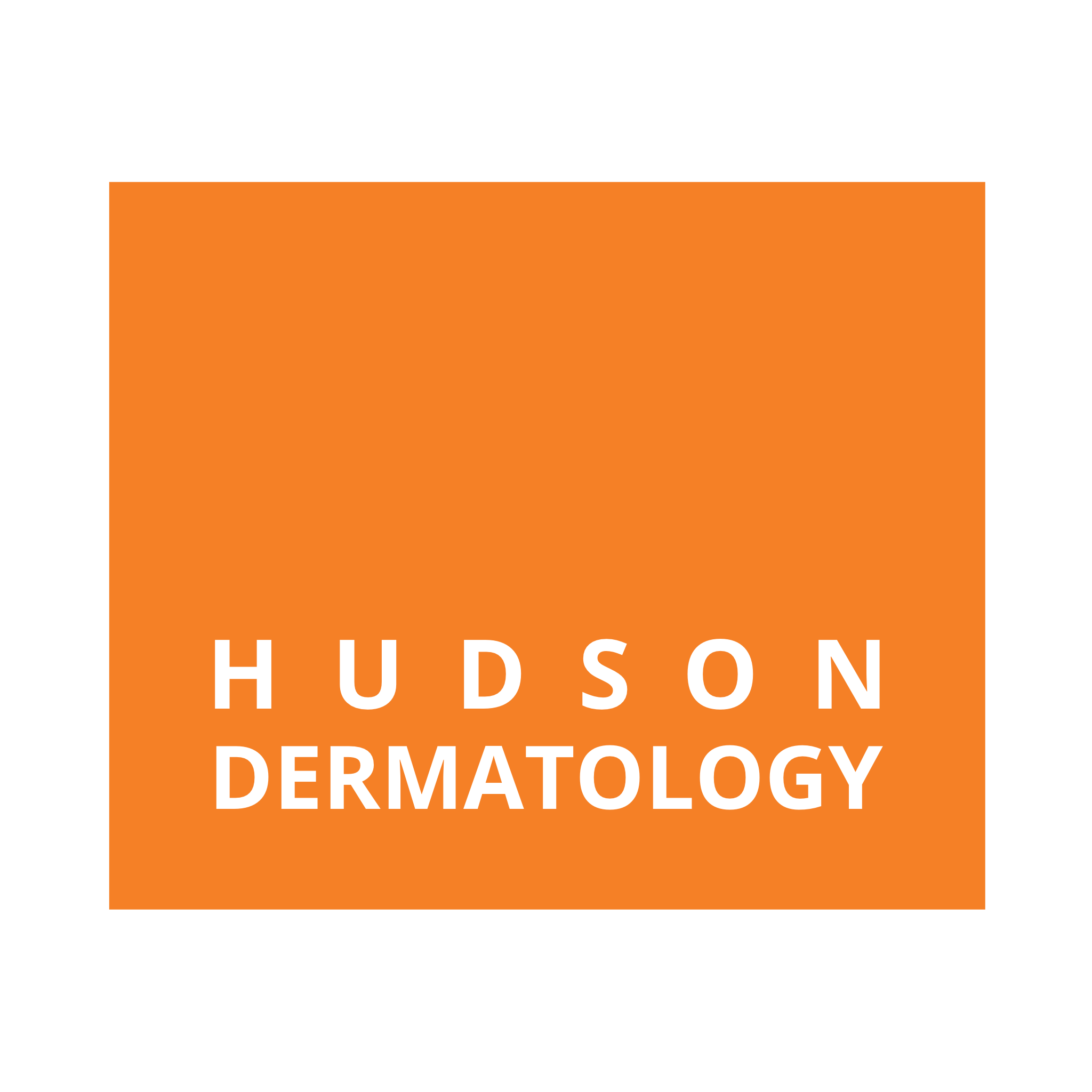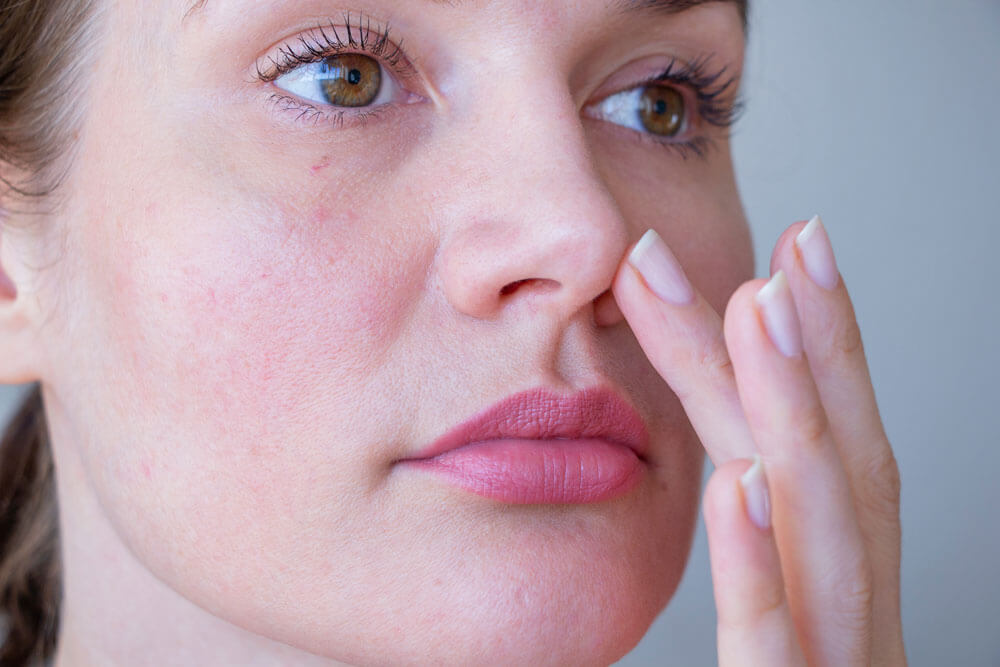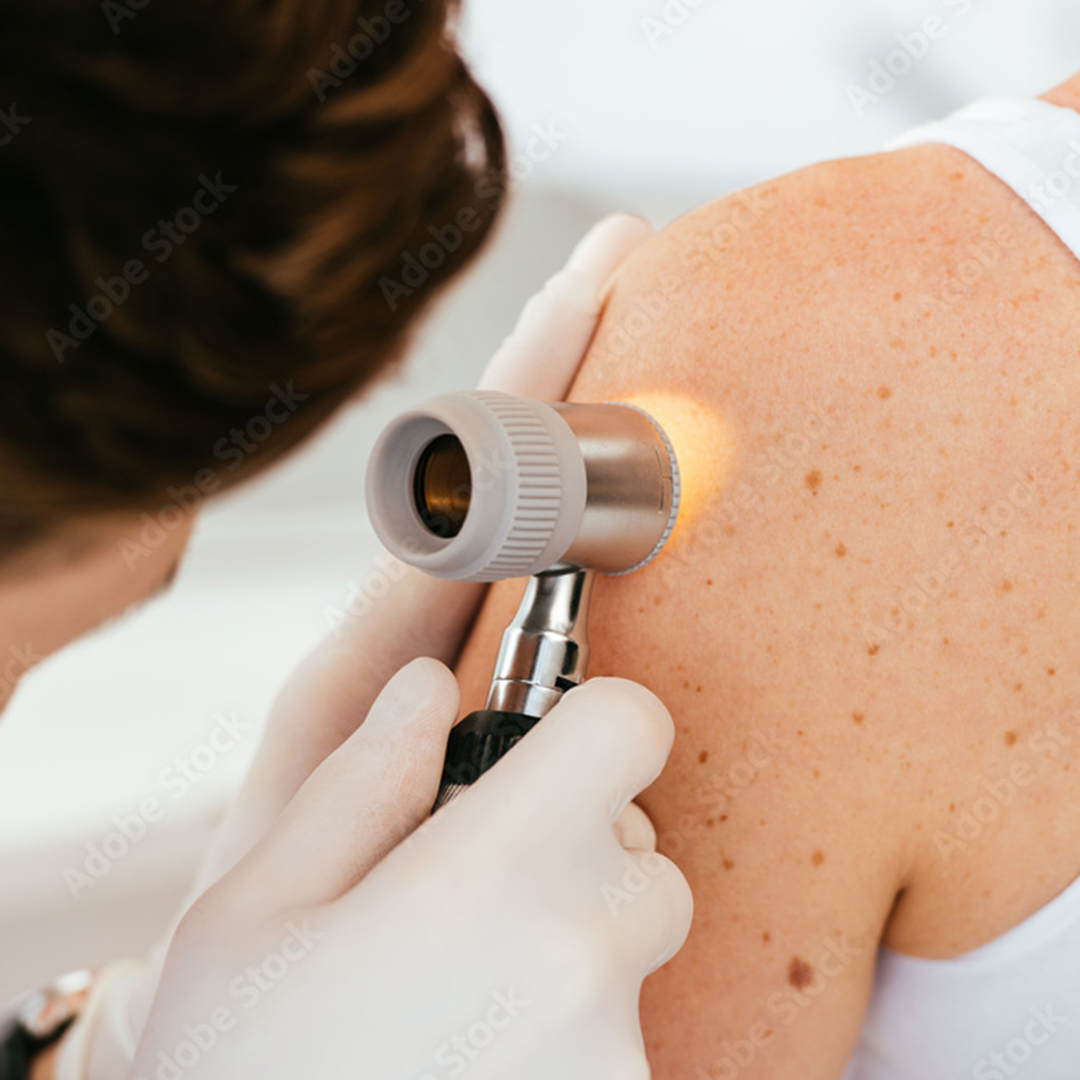Manage Chronic Redness, Acne-Like Bumps, and More in NY
Blushing is a common response to embarrassment, while flushing is associated with physical activity, excitement, or heat. Both types of facial redness have known causes and go away once conditions change, but redness that sticks around longer than should be expected is often something else: rosacea. NY’s Hudson Dermatology routinely works with patients who deal with this chronic facial redness, as well as other symptoms associated with the disease.
There is currently no cure for rosacea, but the highly visible and sometimes uncomfortable symptoms can be managed with focused treatments. Patients can also minimize their risk of future flare-ups by learning about common triggers and making appropriate lifestyle choices. It all starts with a consultation with a board-certified dermatologist.
What Is Rosacea?
Rosacea is a chronic skin disorder that can impact just about anyone—but those most at risk tend to be fair-skinned and older than 30.
The most obvious and common symptom is persistent facial redness, starting on the central features such as the nose and cheeks and extending to the chin and forehead. As patients get older, their symptoms tend to become more pronounced: the red deepens and lasts longer, blood vessels become increasingly visible beneath the surface, pimple-like bumps develop, and the skin can grow thicker and bumpy on the nose—especially in male patients. The redness may also be accompanied by some swelling and itching or burning sensations. Alternatively, in some patients, pimples are the presenting sign of rosacea, appearing before facial redness. Some rosacea patients also report eye irritation, including watering and a bloodshot appearance.
Rosacea appears to be related to a problem with blood vessels that are prone to dilation, resulting in their increased visibility and frequent flushing. A concrete cause has not yet been determined, but other contributing factors may include tiny organisms on the skin (both bacteria and mites), follicle irritation, sun damage, and inflammation due to an unchecked immune response in the body.
CONTACT US TODAY
Contact the Hudson Dermatology team now to set up a consultation in NY. Dutchess, Westchester, Columbia, Ulster, Putnam, Rockland, and Orange County residents can schedule an appointment via our online scheduler.
What Are the Different Types of Rosacea?
There are multiple ways that rosacea symptoms can appear, from skin redness to eye problems to thickening skin. Here are four ways the chronic skin condition may manifest. It is important to realize that the different subtypes are not exclusive of each other and can coexist in one person.
Erythematotelangiectatic
This is a common presentation characterized by frequent flushing and associated redness, as well as fine visible blood vessels on the face, typically on the nose and other central features.
Papulopustular
This very common subtype presents with “whitehead” pustules and red, inflamed bumps. These typically appear on the cheeks, chin, and forehead and are often mistaken for acne. As above, redness and flushing may also appear.
Phymatous
More common in men, the rare phymatous rosacea causes the facial skin to thicken and develop a bumpy texture. When this happens on the nose—creating a fleshy, bulbous appearance—the condition is known as rhinophyma.
Ocular
Impacting the eyes, ocular rosacea manifests as redness and irritation. It can also cause the eyelids to swell. Patients may describe experiencing the constant feeling of grit or sand in their eyes.
Perioral (aka Periorificial) Dermatitis
Red, rashy bumps around the mouth and often around the nose and eyes may be a type of rosacea, seen most typically in younger women as well as children and even infants. The symptom can also appear around other features
YOU DESERVE EXCEPTIONAL PATIENT CARE
Every physician at each of Hudson Dermatology’s eight locations is board-certified and committed to providing quality skincare built on a foundation of advanced technology and techniques. All treatments—medical and cosmetic—are highly personalized and chosen for their safety and results.
YOU DESERVE EXCEPTIONAL PATIENT CARE

What Rosacea Treatments Are Available?
At Hudson Dermatology, laser treatments and similar light-based strategies are often used to address rosacea, since the red hemoglobin in the visible vessels absorbs energy well and converts it to heat. This causes veins to collapse and reduces overall redness.
There are various medications that can help acne-like breakouts, including topicals like azelaic acid and metronidazole. Cleansers that contain sodium sulfacetamide and sulfur—two ingredients used for decades to treat rosacea-related bumps—can also be effective. Vitamin A- derived retinoids are best employed to help prevent future flare-ups, since they can irritate skin with active symptoms. Certain medications may also be taken orally to reduce the severity of flare-ups: antibiotics, low-dose doxycycline, and—for specific patients—low dose isotretinoin.
The redness alone may be managed with brimonidine gel and oxymetazoline hydrochloride cream, both of which provide temporary symptom reduction. Applying green-tinted makeup can also counter the aggressive redness and provide the appearance of more even skin coloration.
Patients who want to reduce their risk of future redness as much as possible can work with us to understand and identify aggravating factors that lead to routine flushing. The most common rosacea triggers include especially cold or hot weather—and related wind and sun exposure—as well as a diet that includes spicy foods and alcohol consumption (especially red wine), hot liquids (from baths to drinks), stress (physical and emotional), and various products applied directly to the skin. Avoiding these variables can make the persistent flushing and blushing of rosacea less likely so that the skin appears clearer and smoother.
Certain treatments apply only to certain types of rosacea. The ocular type, for example, can be managed with gentle cleansers, drops, and warm compresses, as well as antibiotics as needed. Isotretinoin can prevent skin from thickening, though skin that has already thickened due to rosacea may require surgical removal.
Help for Other Skin Conditions
With a medical dermatology focus, the team at Hudson Dermatology works with many patients seeking relief for a variety of chronic conditions, including acne, eczema, and psoriasis. Any effective treatment plan must start with a consultation and proper diagnosis of the condition.
For more information about rosacea, visit the American Academy of Dermatology’s page on the condition.
CONTACT US TODAY
Contact the Hudson Dermatology team now to set up a consultation in NY. Dutchess, Westchester, Columbia, Ulster, Putnam, Rockland, and Orange County residents can schedule an appointment via our online scheduler.
FULL-SERVICEDERMATOLOGY
With offices in Cornwall, Fishkill, Hudson, Kingston, Poughkeepsie, Somers, and Tarrytown, Hudson Dermatology offers the highest quality of care centered around medical dermatology, cosmetic dermatology, and pediatric skincare. Patients in New York’s Hudson Valley area can depend on the professional team at Hudson Dermatology to satisfy all their medical and cosmetic skincare needs.
FULL-SERVICEDERMATOLOGY
With offices in Cornwall, Fishkill, Hudson, Kingston, Poughkeepsie, Somers, and Tarrytown, Hudson Dermatology offers the highest quality of care centered around medical dermatology, cosmetic dermatology, and pediatric skincare. Patients in New York’s Hudson Valley area can depend on the professional team at Hudson Dermatology to satisfy all their medical and cosmetic skincare needs.











